Cueva de Las Manos
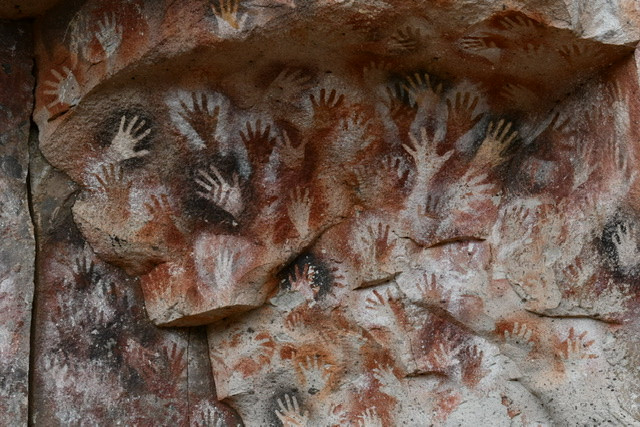
After a month of running washboard gravel roads and jarring our kidneys, we’ve decided to hit the asphalt road and go south for Christmas and New Year’s. (Post note, a lot of the route south has been kidney-jarring gravel road) We might not make the glaciers, which was our desired destiination for Christmas but, what the heck, we saw that Argentine rodeo and it was the best thing ever.
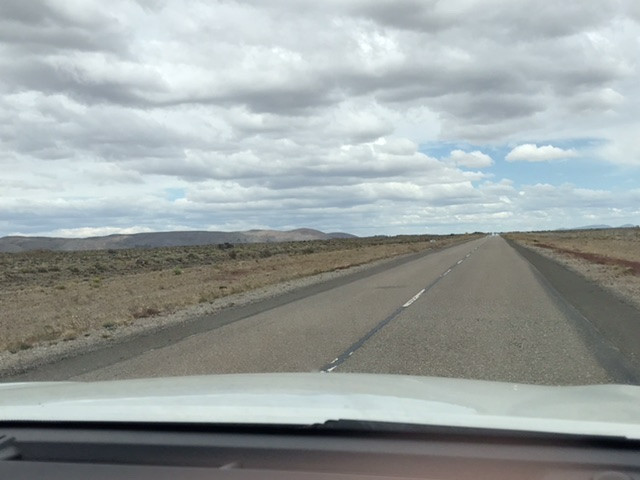
After the rodeo we camped in Gobernador Costa, a small town about 100 km outside of Rio Pico. We returned to the familiar, open landscape of the Patagonian desert along Ruta 40.
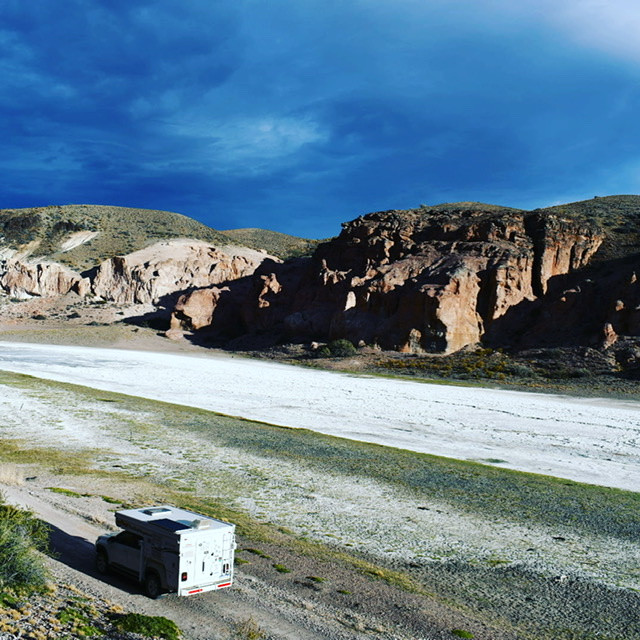
Camping spots are few and far between in this part of the country, Santa Cruz Provence. There is a lot of windswept desert here and not many places to tuck in. As we entered Santa Cruz province.We did find a roadside sign advertising camping, but we went in and found only a couple of gauchos, their knives out, chopping-up a guanaco to feed chained dogs. It would’ve made the best picture but we thought discretion was appropriate. The older of the two gauchos, very friendly, said his boss was in the nearby city and they were closed, but we could find a hotel just a few kilometers down the road (which never appeared). Must be how he gets rid of unwanted gringos.
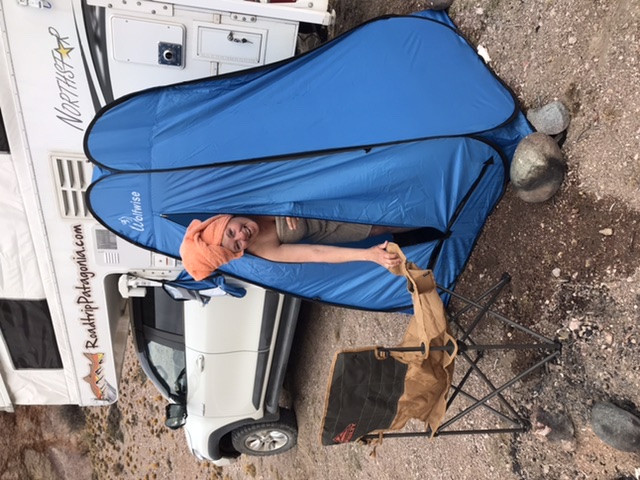
We did find a promising campsite described on the GPS and made our way into a deep canyon with a cleft to shield us from the wind. It was beautiful, and we made camp. There was even hot showers at that campsite. We called that camping spot Camp Guanaco.
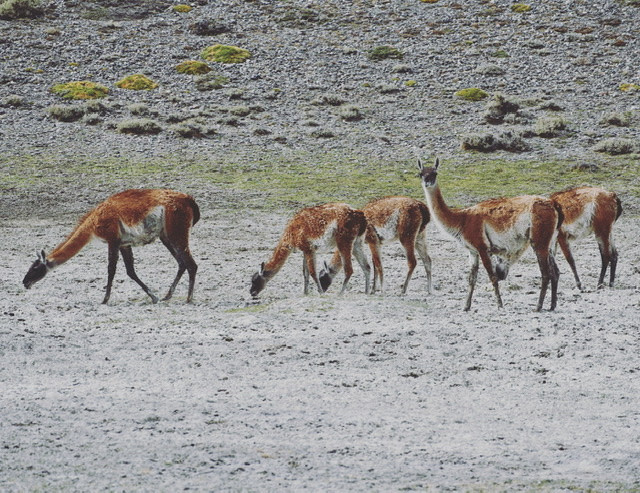
They were all over the valley the next morning.
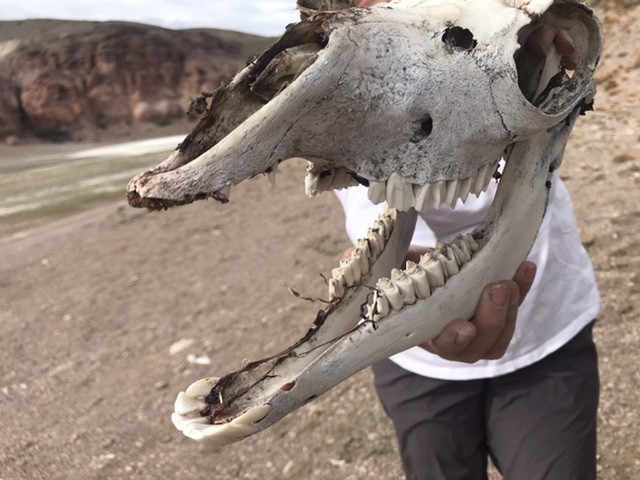
They were skeletons and skulls of them everywhere.
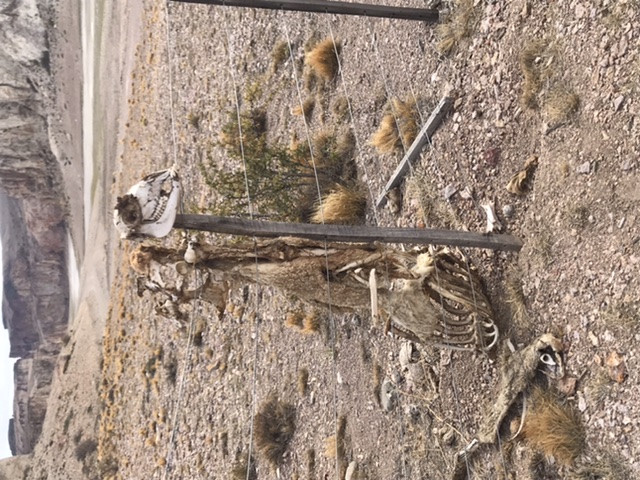
We’re starting to see a lot of dead Guanacos on fences. It seems evolution didn’t design them to leap a standard 4-foot fence. We watched live ones struggle with the concept. They get caught on their haunches, especially if they attempt to jump the fence going uphill; some of them get caught on the top strand of barbwire and die a slow, miserable death.
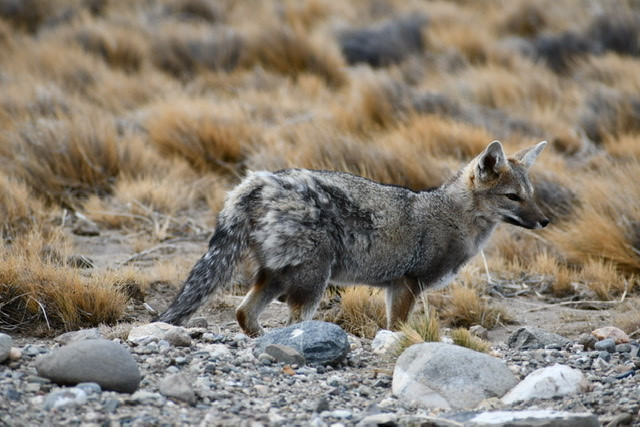
A short drive, and lots of photos of wildlife later, we came to a provincial park called Cueva de los Manos.
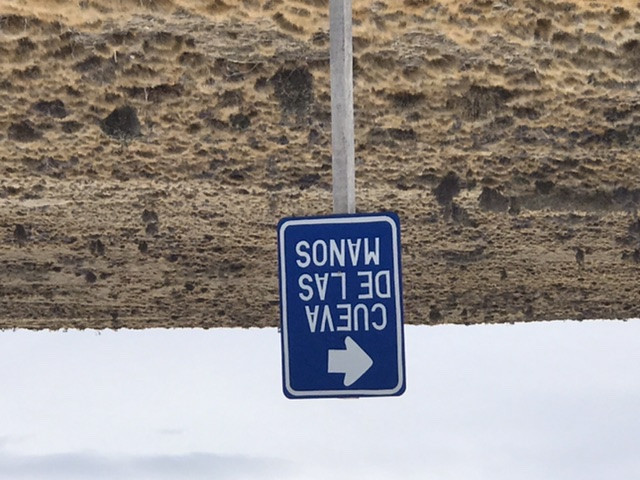
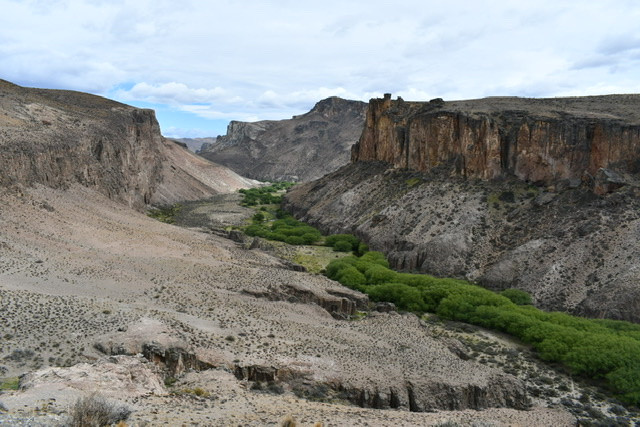
For 800 pesos we were greeted and issued a guide. Our guide, Daniela, spoke good English and we accompanied a party of Argentines who spoke none. It was very informative to listen to her description of the pictographs done in Spanish and English.
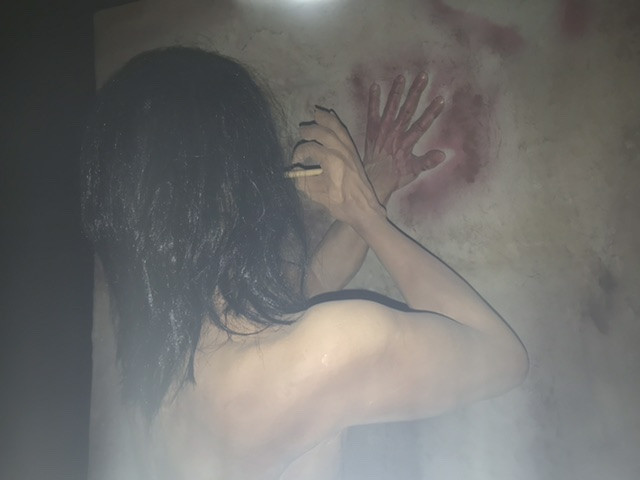
The pictographs date back before 7000 BC. The local Indians would use the overhanging cliffs and caves for shelter. To commemorate their presence, they would blow paint over their hands using a straw. Whole families with hands of different sizes would be represented. If you look closely, you will see a couple hands with six fingers, which is a genetic anomaly.
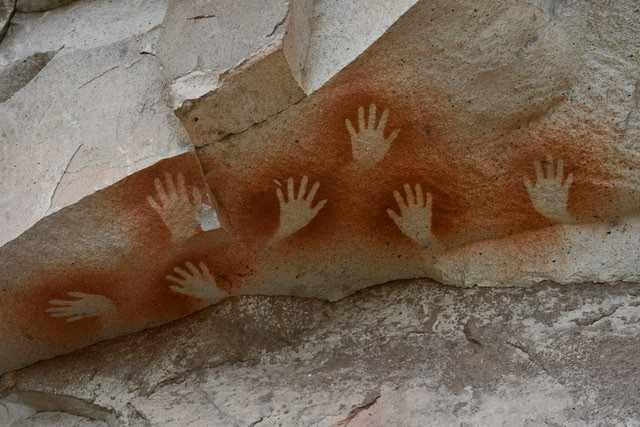
There were numerous pictographs of hunting scenes everything from herds of Guanacos, pregnant Guanacos, baby Guanacos, skinned Guanacos and hunters dressing Guanacos.
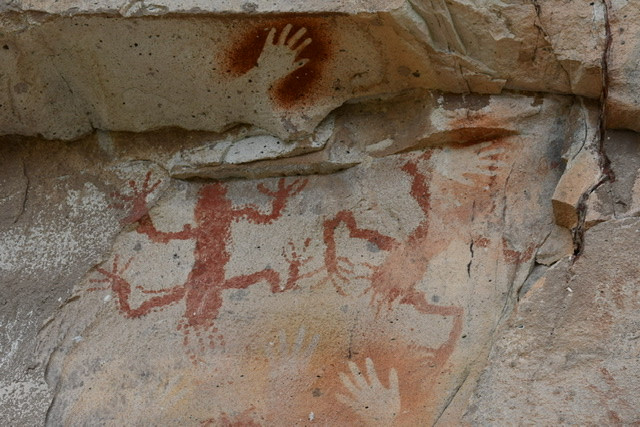
The pigments come from the rock formation of the nearby Canadon de Las Pinturas (painted canyon). There was even a couple instances of rare bluish green tints that came from a copper bearing site near Largo Argentina, about 150 km north. It was speculated it was carried or traded for someone wishing to make a flashy difference.
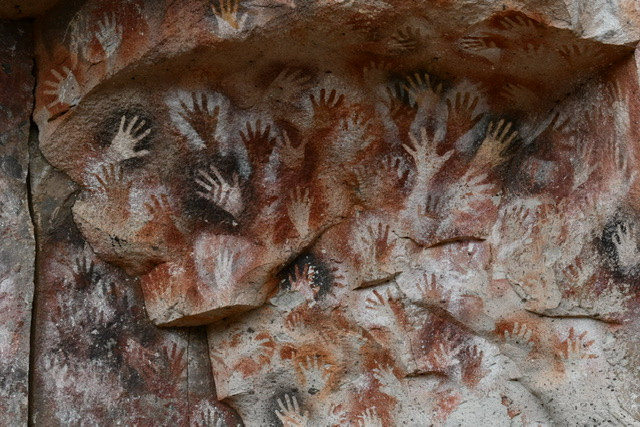
We love visiting petroglyph and pictograph sites where ever we can as we travel and this one was one of the best and most impactful we’ve ever seen.
